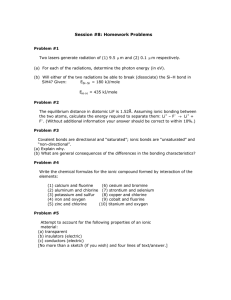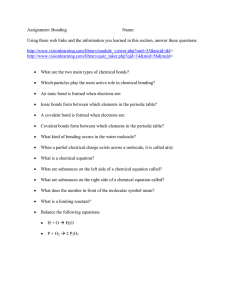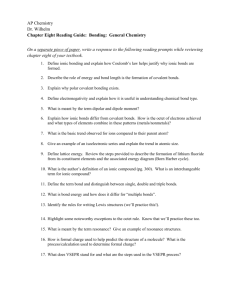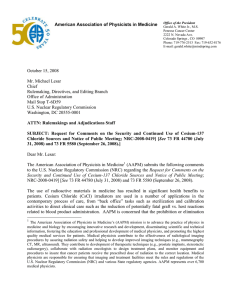Session #9: Homework Problems
advertisement
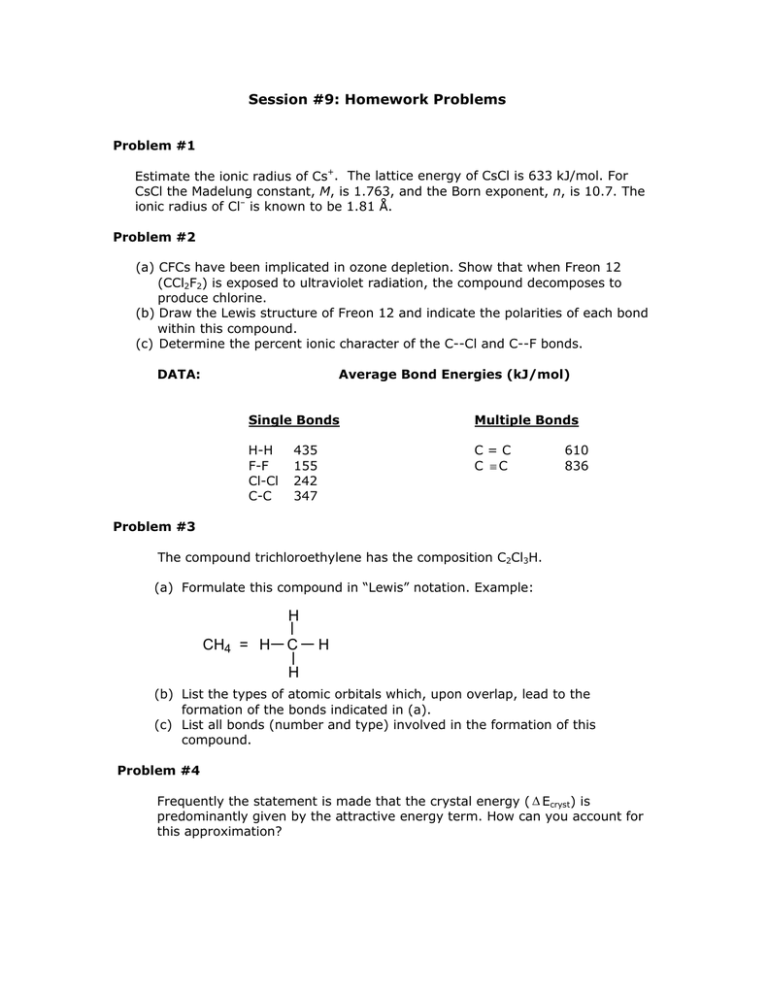
Session #9: Homework Problems Problem #1 Estimate the ionic radius of Cs+. The lattice energy of CsCl is 633 kJ/mol. For CsCl the Madelung constant, M, is 1.763, and the Born exponent, n, is 10.7. The ionic radius of Cl– is known to be 1.81 Å. Problem #2 (a) CFCs have been implicated in ozone depletion. Show that when Freon 12 (CCl2F2) is exposed to ultraviolet radiation, the compound decomposes to produce chlorine. (b) Draw the Lewis structure of Freon 12 and indicate the polarities of each bond within this compound. (c) Determine the percent ionic character of the C--Cl and C--F bonds. DATA: Average Bond Energies (kJ/mol) Single Bonds Multiple Bonds H-H F-F Cl-Cl C-C C=C C ≡C 435 155 242 347 610 836 Problem #3 The compound trichloroethylene has the composition C2Cl3H. (a) Formulate this compound in “Lewis” notation. Example: H CH4 = H C H H (b) List the types of atomic orbitals which, upon overlap, lead to the formation of the bonds indicated in (a). (c) List all bonds (number and type) involved in the formation of this compound. Problem #4 Frequently the statement is made that the crystal energy ( Δ Ecryst) is predominantly given by the attractive energy term. How can you account for this approximation? Problem #5 For benzene (C6H6), which has a schematic carbon arrangement? C C C C C C (a) Determine the total number and types of covalent bonds. (b) For each bonding type, determine the bonding orbitals which, by overlap, lead to their formation. Problem #6 Why is double bonding encountered in some carbon compounds, but not in germanium compounds – although both exhibit sp3 hybridization? Problem #7 List the individual steps with the corresponding chemical equations used in constructing a Born-Haber cycle for the formation of CaBr2 from the element and identify those which you expect to be exothermic. Problem #8 (a) Given the ionic radii, Cs+ = 1.67Å, Cl– = 1.81Å, and the Madelung constant M(CsCl) = 1.763, determine to the best of your ability the molar Crystal energy ( Δ Ecryst) for CsCl. (b) Not given additional data, do you expect the value obtained to be larger or smaller than theoretical, and by how many percent do you anticipate to be off? MIT OpenCourseWare http://ocw.mit.edu 3.091SC Introduction to Solid State Chemistry Fall 2009 For information about citing these materials or our Terms of Use, visit: http://ocw.mit.edu/terms.

